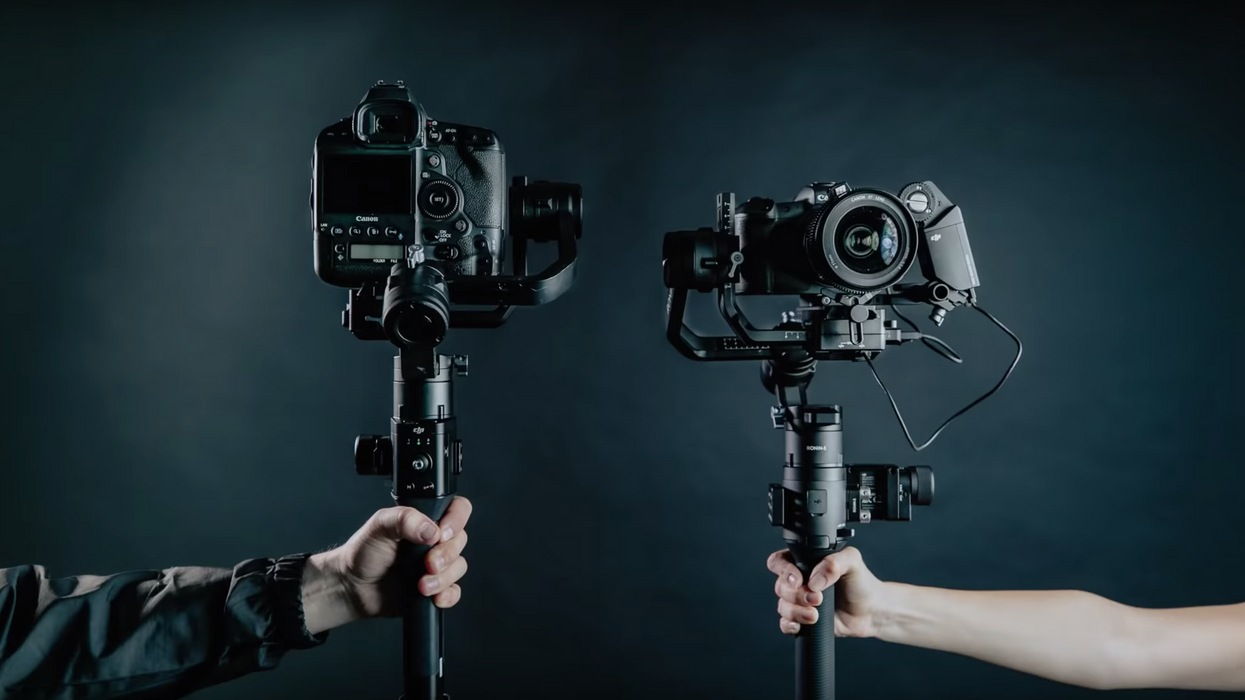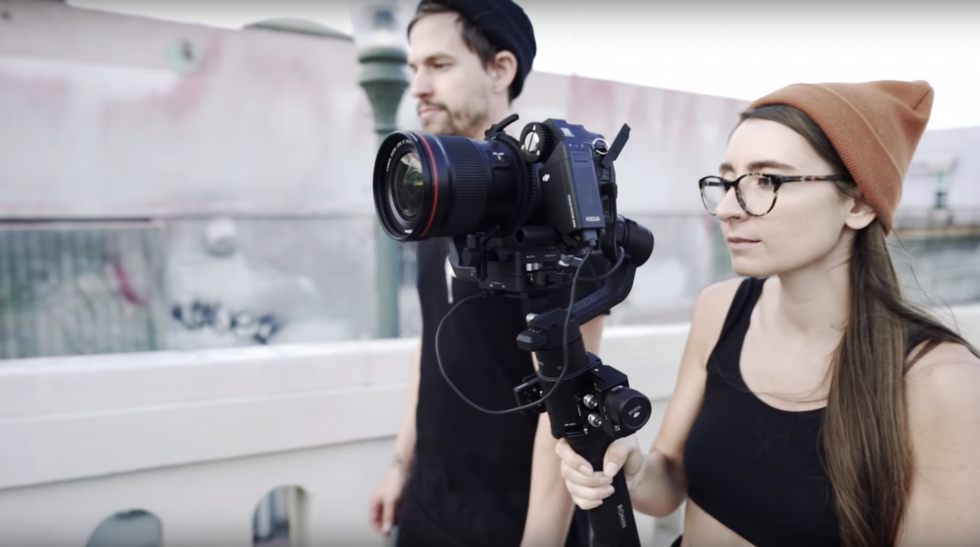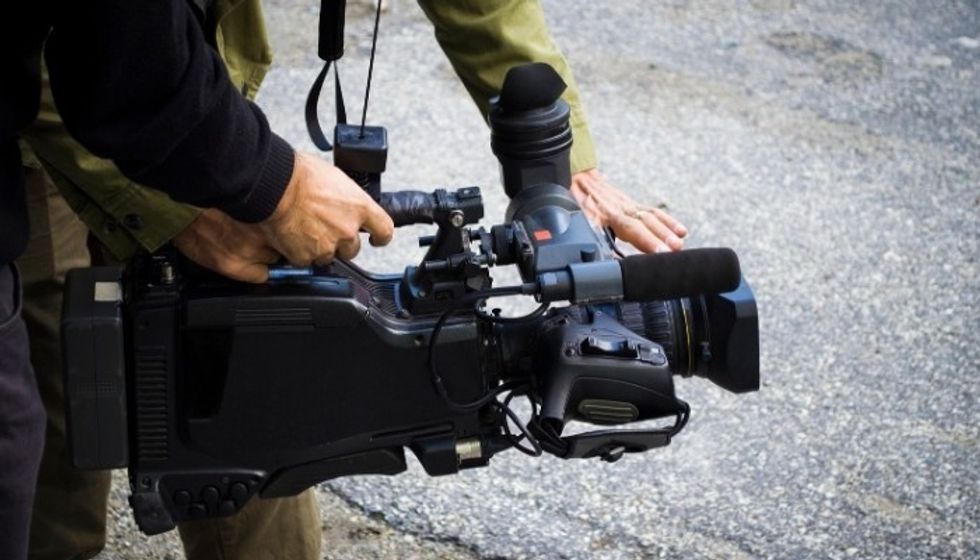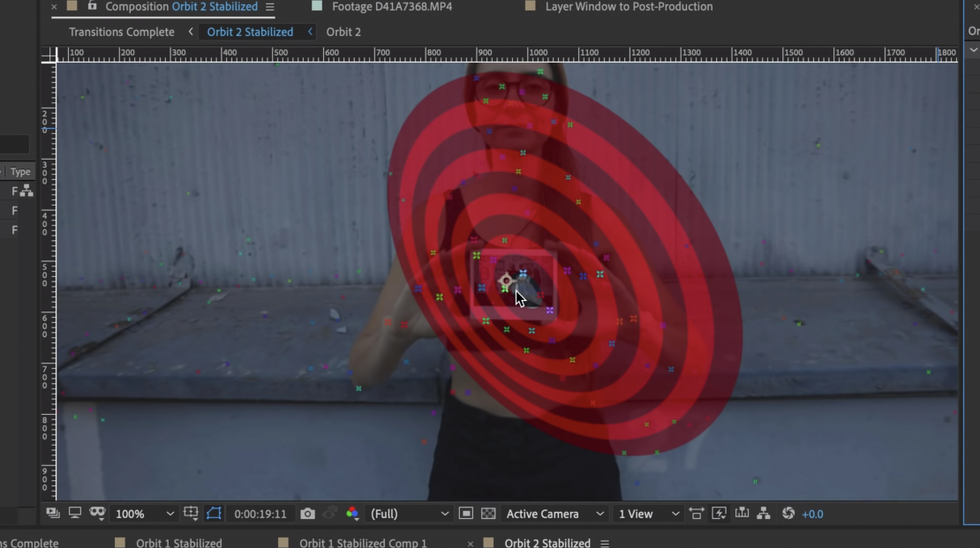5 Clever Transitions You Should Try with Your Gimbal
Give your edit AND your camera work some style with these sweet gimbal transitions.

Gimbals aren't just good for getting buttery smooth camera movement, you guys. You can also use them to capture some interesting, kinetic transitions to use between shots or scenes.
One of my personal favorite YouTube channels, Mango Street, makes a good case for gimbal transitions and how they can amp up a production. Check out their video below to see 5 clever transitions with a gimbal (in this case, they’re using the DJI Ronin S):
Let's go over the transitions mentioned in the video.
The Orbiting Hyperlapse
This is when the subject is placed against a flat wall and the camera operator keeps the subject in center-frame (this is essential) and walks in a semi-circle from one part of the wall to the other and hard cuts from scene to scene, repeating the camera move and framing.
In the video, it’s stated that the distance between the subject and the camera should stay as consistent as possible. One way to do this is to use a short piece of twine or string that is the exact distance away from your subject that you’d want your camera to be and then use that to make marks on the floor with tape so that you can repeat the move over and over with consistency.
Frame Fill
This one is super simple. All you do is take a hipster-friendly instant photo with your Instax Mini and hold it in the shot. In their example, Mango Street holds the photo in the center, but you can hold it anywhere in the shot, so long as it’s not tilting in any direction. Then, you just ninja walk your camera into the photo and use3D camera tracker and a solid layer to add your next video to the clip, making a smooth transition.
Zolly Ramp
Based on the famed “vertigo effect”, a dolly zoom, or zolly, is when the camera dollies in or out and zooms the opposite way. If you’re going to dolly in, then you zoom out, and vice versa. The “ramp” part of the effect is when the zolly gets repeated in a different location in the same fashion and then speed ramped between the two to make a creative transition effect. If you don’t have a motor on your zoom lens (most of us don’t), then it’s pretty easy to fake the effect by using 4K footage in a 1080p timeline and keyframing your scale in post.
360 Roll
The DJI Ronin S has an infinite roll feature when it’s put into flashlight mode. Using this function, just ninja walk forward and roll the camera. Then, once you’re in a new location, replicate the move as close as possible and cut between them when your scene is 180 degrees rotated.
Outside In
This effect utilizes 3D camera tracking and keyframing once again. Frame up a window in your shot, then dolly back and pan away. Then, in post, add in an outdoor shot and keyframe the scale to match the window when you dollied backward and track the outside clip to each corner of the window.
Key things to remember for all of these effects:
- Use motion blur when available to sell the transition from one clip to another.
- Look for opportunities to match-cut
- 3D Camera Tracker is your friend (this speeds up any of your keyframing needs).
I have a love/hate relationship with gimbals. I see the appeal, but the rampant usage frustrates me. Not to knock them, but there’s something masochistically lovely and satisfying about getting the shot “the hard way.” I’m very aware that this is a losing battle, though.
What are your favorite ways to use a gimbal? Let me know in the comments below.
Source: Mango Street














